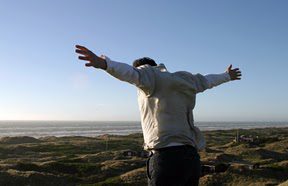One of the biggest problems chief learning officers face is that learning is often seen as the consolation prize, as in, “we had disappointing results, but we learned a lot.” For learning to take its place as the most important topic in executive committees and boards, we need to make it central to organizational management.
A revolution has been happening in how organizations learn, and the results are stunning. This revolution has three parts. When combined, these three initiatives offer a way to create a virtuous cycle of learning, action and results.
The first is brought to life in a book by Eric Ries, The Lean Startup. The upshot is to look at a business problem in terms of the assumptions people make, then devise a test for each one. The result is what Ries calls actionable learning, which has immediate application. Apple’s move from the PowerPC to Intel chips contained thousands of interconnected projects. In part by using actionable learning, it made the move with almost no customer dissatisfaction — an achievement that impressed even Bill Gates, according to Walter Isaacson’s Steve Jobs biography.
The second part of the revolution is actionable learning comes to life in an executive Scrum process. Scrum is a system of project management and software development that’s been booming in IT for years, the outgrowth of thinking from Hirotaka Takeuchi and Ikujiro Nonaka in the 1980s. Scrum is partially responsible for the blizzard of new products, releases and enhancements in the technology world.
A basic model of Scrum can be applied in executive groups with amazing results. It requires three roles: product owner, facilitator and team. The facilitator starts the session by defining working agreements, such as not using cellphones during the next phase of the meeting. The agreements come from the group itself, and when done well, the process is never confrontational. Then the group decides how long an iteration will be. The iteration is a burst of activity. Fifty minutes is a good start, followed by 10-minute breaks.
In each iteration, the facilitator leads the group to define what it should achieve before the end, often by asking the product owner, such as the CEO, what’s required. A big countdown clock reminds people how much time is left. At the end of the iteration, the group goes on break. The next iteration starts with a quick retro in which people talk about what worked, what didn’t and what needs to be changed in the working agreements to allow faster progress. The magic of this process is it turns learning into a game, as noted in Daniel Mezick’s book The Culture Game.
The third part is a great work culture in which the Scrum process happens. In my book Tribal Leadership, the basic building block of an organization is a tribe, a group of 20 to 150 people. Only 22 percent have the right culture, one in which people know what values make the tribe work.
In working with special weapons and tactics (SWAT) teams across the country, I’m impressed with their approach to values: it is usually bottom up and focused on decision making. If a person talking to a hostage taker doesn’t make decisions in the same way as a person looking at the situation through the rifle scope, lives can be lost. In most SWAT teams I’ve seen, each member holds everyone else accountable for the values, regardless of rank.
Here’s what’s coming to a tribe near you. First, people will focus on actionable learning by testing assumption using Scrum processes: defining done, working in short bursts, performing retros to learn lessons and translating these into working agreements for future iterations. For this to work the culture within the tribe needs to focus on core values as the determiner of action. When these three come together, learning is hardwired into the group, and requires no pushing, incentives or nagging to get people to acquire and use new information. Best practices will be invented, shared, refined and retransmitted in real time.
Dave Logan is co-founder of CultureSync, a management consulting firm specializing in cultural change, executive coaching and strategy. He can be reached at editor@CLOmedia.com.
















